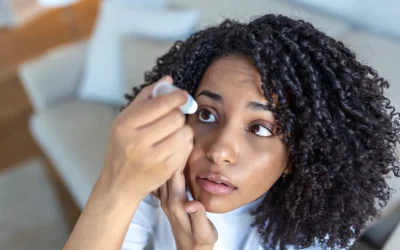Dry eye can be a frustrating issue for many people. Constant irritation and discomfort can make it difficult to concentrate or enjoy daily activities. While various factors can cause dry eyes, meibomian gland dysfunction (MGD) is one of the most common conditions that affects the health of your eyes’ oil glands, leading to chronic dryness. But what exactly is this condition, and what can you do to relieve it?
In this blog post, we will discuss everything you need to know about MGD, including its symptoms, causes, and how to find relief with dry eye treatment in Plymouth.
What is meibomian gland dysfunction?
The meibomian glands are tiny oil-producing glands found within your eyelids. These glands secrete oils that help maintain the tear film of your eye, keeping your eyes hydrated throughout the day. Meibomian gland dysfunction (or MGD) is caused by clogging or inflammation of the meibomian glands. As a result, the glands fail to produce enough oil to produce quality tears, leading to dry eye symptoms.
Meibomian gland dysfunction symptoms
MGD symptoms can significantly impact daily activities, making it difficult to perform tasks like reading or working on a computer. Common symptoms of meibomian gland dysfunction (MGD) include:
- Dryness and irritation in the eyes
- Itchiness or a burning sensation
- Sensitivity to light
- Blurry vision or difficulty focusing
In severe cases, blepharitis can occur. Blepharitis is an inflammation of the eyelids, causing redness, swelling, and sticky discharge.
What causes meibomian gland dysfunction?
Several factors can contribute to the development of meibomian gland dysfunction (MGD), including:
- Excessive use of digital screens
- Aging and natural changes in the eyelids
- Hormonal changes
- Environmental factors, such as dry or windy conditions
- Medical conditions like rosacea, diabetes, and thyroid problems
- Poor eyelid hygiene
- Long-term contact lens wear
How to diagnose and treat MGD
If you are experiencing dry eye symptoms, you should talk to an eye doctor who specializes in diagnosing and treating meibomian gland dysfunction. Your doctor will perform a comprehensive eye exam, which may involve collecting oil samples from your eyelids to examine your meibomian glands.
Treatment for MGD can include a combination of therapies tailored to your specific needs. Your doctor may recommend warm compresses, which can help to improve oil gland expression, remove blockages, and decrease the inflammation associated with MGD.
At Progressive Family Eye Care, we offer a range of solutions to treat dry eye disease caused by MGD:
- BlephEx®: BlephEx® is a revolutionary treatment designed to address MGD and improve dry eye symptoms. This in-office procedure uses a gentle, rotating brush to clean, exfoliate, and remove bacteria and toxins from the eyelids and eyelashes that may contribute to MGD. By thoroughly cleaning the eyelids, BlephEx® helps to restore the normal function of the meibomian glands, reducing dry eye symptoms.
- OptiLight: OptiLight by Lumenis is an innovative light-based therapy that can be used in combination with other treatments for MGD-related dry eye. This non-invasive procedure uses specific wavelengths of light to target and stimulate the meibomian glands, promoting their proper function. OptiLight treatment can enhance the effectiveness of other therapies and help manage dry eye symptoms more effectively.
Personalized treatment for lasting dry eye relief
With the right diagnosis and a customized treatment plan from your eye doctor, MGD can be effectively managed. Targeted care helps reduce irritation, dryness, and other uncomfortable symptoms so you can enjoy your day without discomfort.
Don’t let dry eye symptoms disrupt your life. Schedule an appointment with our expert team and find out if MGD is the source of your discomfort.





